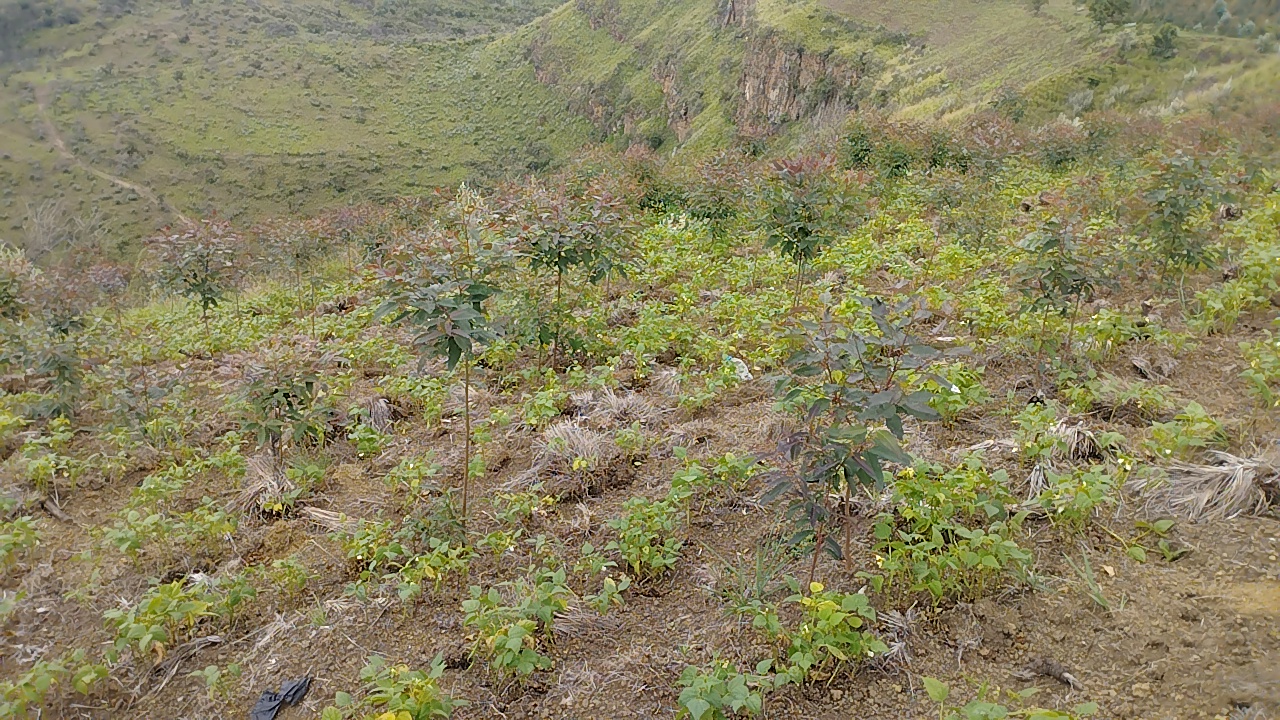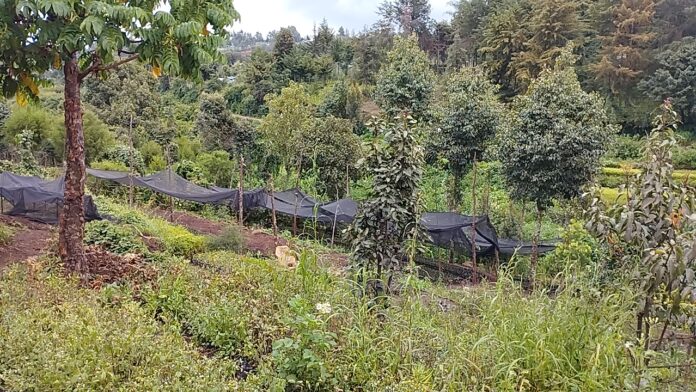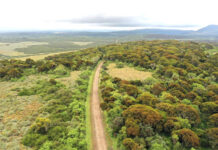By Tabitha Munyiri
Nakuru County, Kenya: Community Forest Associations (CFAs) may resume cultivation of maize in forest plantations under the Plantation Establishment and Livelihood Improvement Scheme (PELIS). This is expected to happen after the Kenya Forest Service (KFS) conducts a study to establish the pros and cons of maize cultivation in forest plantations.
Under the PELIS system, CFAs, which are licensed by KFS, cultivate food crops on forest land while also nurturing tree seedlings planted on the land. CFAs are regulated by the Participatory Forest Management Plan which deliberately involves communities adjacent to forests and other stakeholders in the management of forests while at the same time allowing them to gain a livelihood from the forests.
The ban that was introduced in January 2021, by the then Environment and Forestry Cabinet Secretary Keriako Tobiko was commended by conservation groups, while farmers who practiced PELIS exhibited contrary reactions.
Currently, an estimated 10,000 Ha of forest land is under PELIS, also known as the Shamba System in Kenya.
Head of Plantations at KFS, Mercyline Khalumba, speaking during a Science Cafe organized by the Media for Environment, Science, Health and Agriculture (MESHA) at Karura Forest, said that maize cultivation was halted as it often suppressed tree growth by shading the trees which stagnate as a result of obstructed sunlight. This takes them longer to grow to maturity. ” Sometimes when harvesting maize, some trees are also accidentally cut when the maize stalks are cut, leading to a low tree survival rate,” she added.

In September 2022, members of the Dundori Forest CFA, which was also the pilot project for the Shamba System, noted that for the first time Dundori in Bahati constituency was experiencing famine due to the ban. Moses Mwaura, a member of the CFA, attributed the current food shortage to the maize ban in forest land. He appealed to the government to reconsider the ban for the sake of the country’s food security situation.
“No matter how many cabbages, kales, beans, or potatoes we plant, without maize, we would still be hungry as a nation. Nonetheless, maize provides shading for a short time and is harvested and poses no long-term effects on trees,” he said.
PELIS was introduced in Kenya after the enactment of the Forest Act, of 2005. The Act makes provisions for the conservation and management of the public, community, and private forests.
However, the system had already been tried and tested by the Dundori Forest CFA with interventions from former Bahati member of parliament Kimani Ngunjiri, who defended the scheme from those who argued that making forest land accessible to the public would give way to tree poaching and illegal logging. The project which was begun in 1998, saw over 500 hectares of land covered with trees in Dundori.
Peter Njoroge, Chairperson of the CFA, dismissed claims from conservation activists that the shamba system gives way to the destruction of forests, saying that only members of CFAs are given access to cultivating forest land.
“CFAs have to be registered and committed to protecting forests. Failure to which one is kicked out of the forest land. As members of the Dundori CFA, we also help the KFS in protecting the forest and cannot allow anyone to cut down or practice any destructive activity in the forest. We are the first guards,” he said.
According to part IV of the Forest Act, 2005, anyone found except under a license or permit or a management agreement issued; clearing, cultivating or breaking up land for cultivation or for any other purpose, felling, cutting, taking, burning, injuring or removing any forest produce is liable on conviction to a fine of not less than fifty thousand shillings or to imprisonment for a term of not less than six months, or to both such fine and imprisonment.
Apart from the agro cultivation of maize in forests, which was observed to be slowing down, the maturity of trees, Ms. Beatrice Mbula, Head of Liaison at KFS commended the Shamba System, saying that trees grown in the system has been observed to grow faster than trees that are not taken care of and cultivated.
The system also serves the forests and the farmers, who get massive proceeds from selling the crops. Khalumba said that a study has been done to estimate how much farmers get from farming in forest land. “On a hectare of land, a farmer makes up to 300,000 shillings annually. One may harvest about 138 bags of potatoes and 17 bags of beans per hectare,” she said.
Through this, the country is able to produce food while the forest cover increases. An increase in the forest cover in turn increases carbon sync which is required for decarbonization of the environment which in turn lowers the level of greenhouse gasses available in the environment and which are contributing to climate change.
Khalumba confirmed that maize cultivation in the Shamba System may be reintroduced under proper management should the study show that maize is more beneficial than it is a threat when grown together with trees.
Elizabeth Wanjiku, a farmer in Dundori forest, is hopeful that the ban will be lifted, noting that most crops are yielding low returns due to the current drought and changing weather patterns. “Our livelihoods depend on maize which we farm, sell and then cater to our family’s needs. We have tried substituting with potato farming but the potatoes rot on the farms. We have always farmed in accordance with all guidelines given by the government and will continue to do so to protect our forests. ”
President William Ruto recently committed to making sure that Kenya attains a 30% forest cover by 2032. According to Mbula, Shamba System is among the programs that the KFS is using to ensure that this is achieved. Kenya’s forest cover currently stands at 12%.














